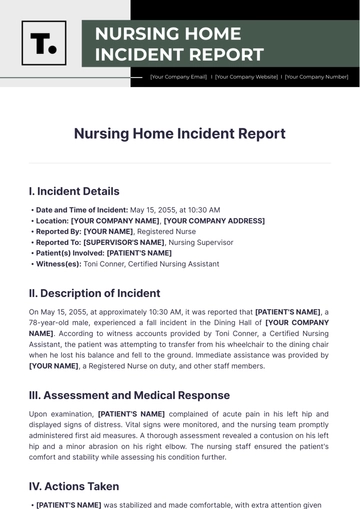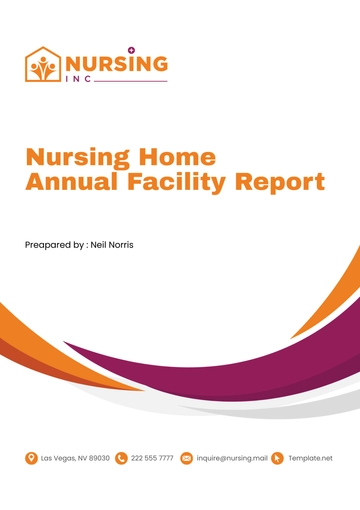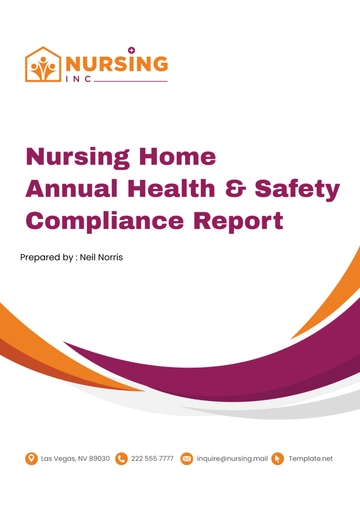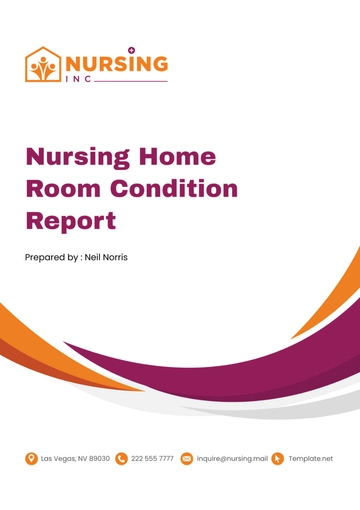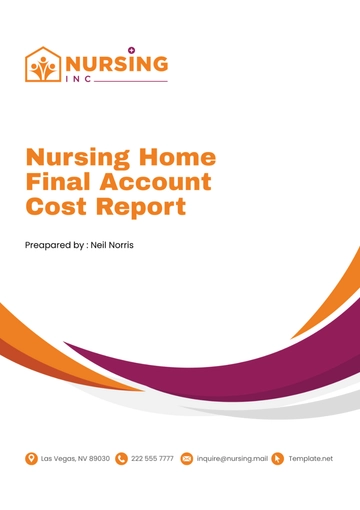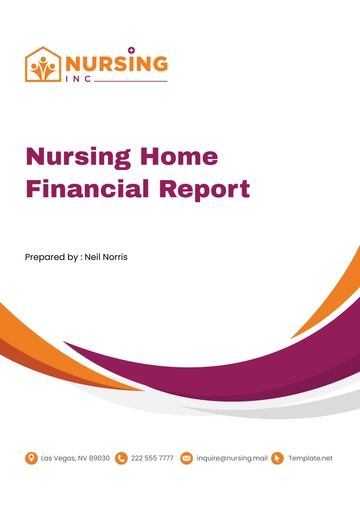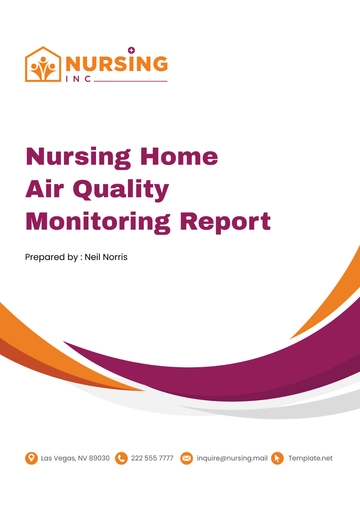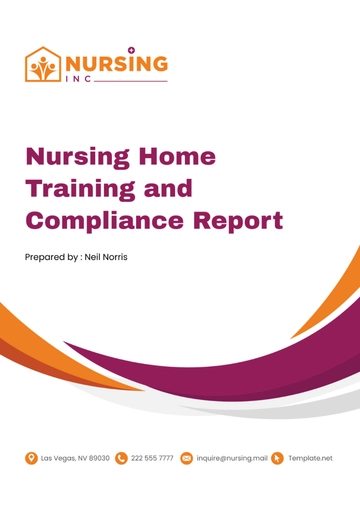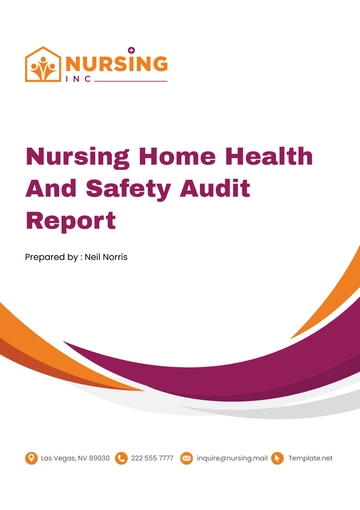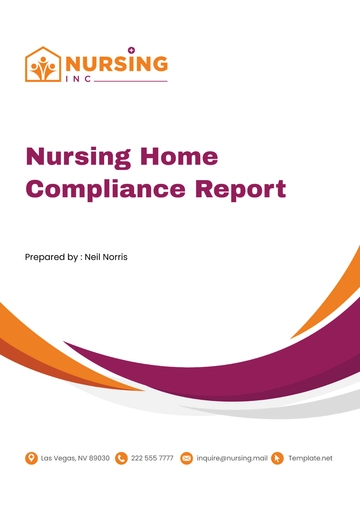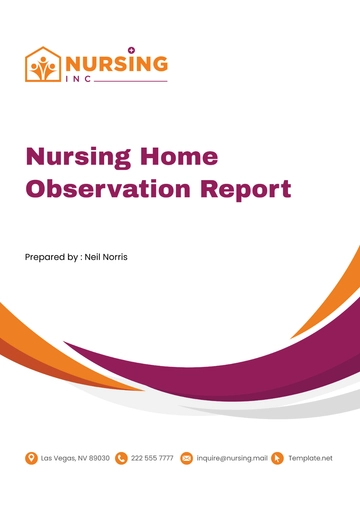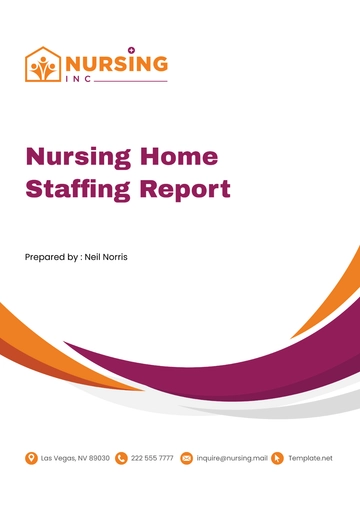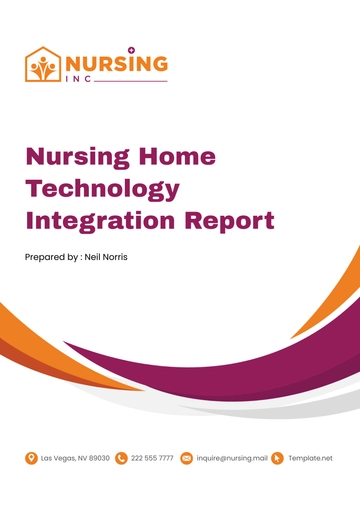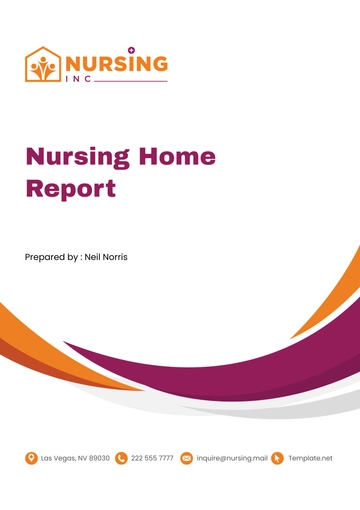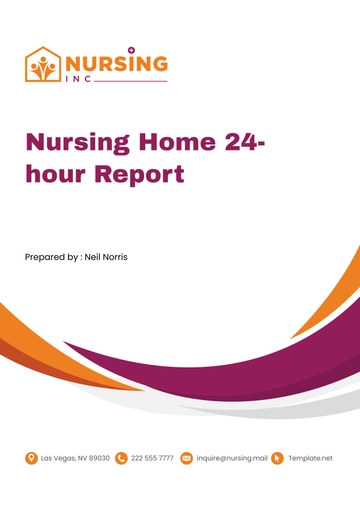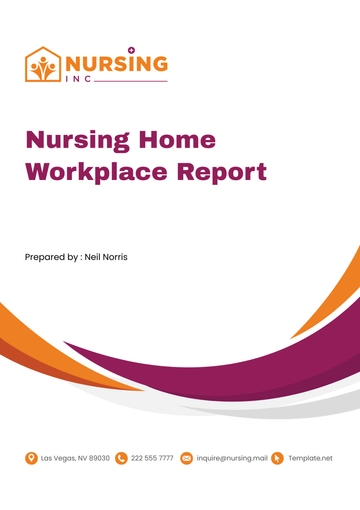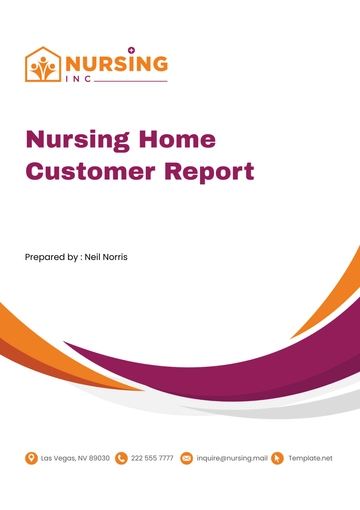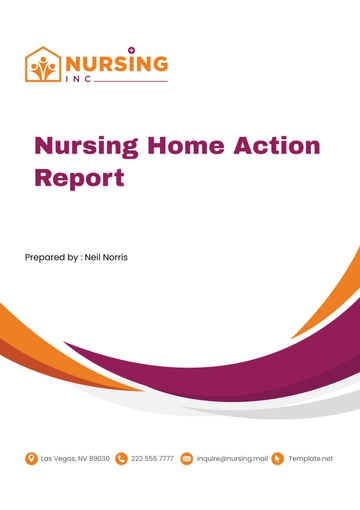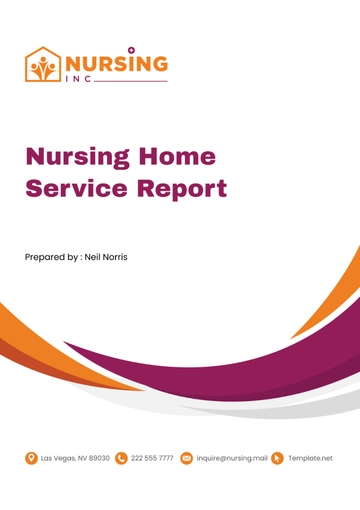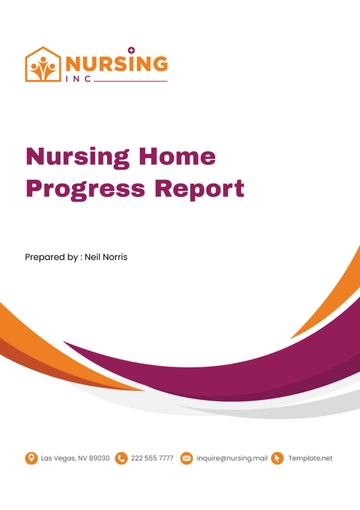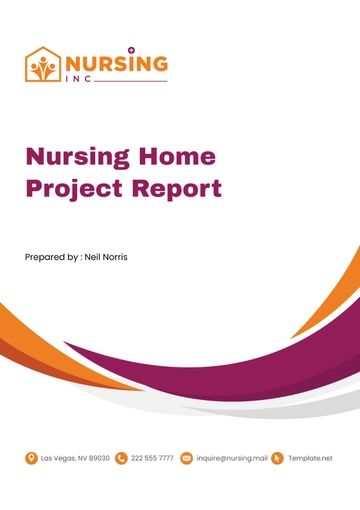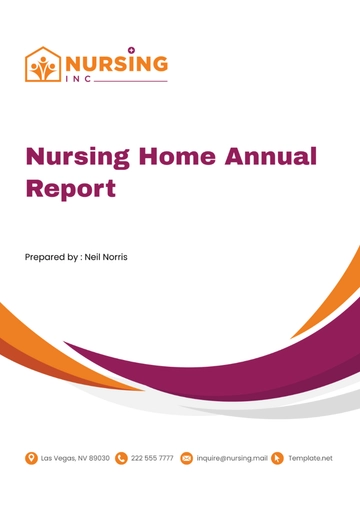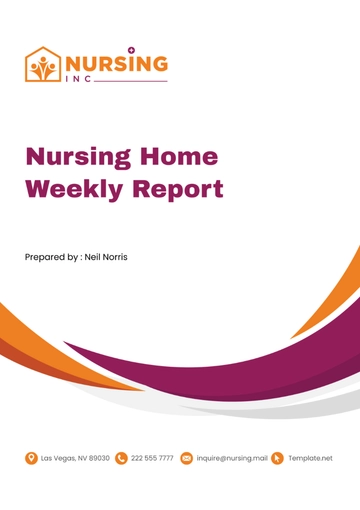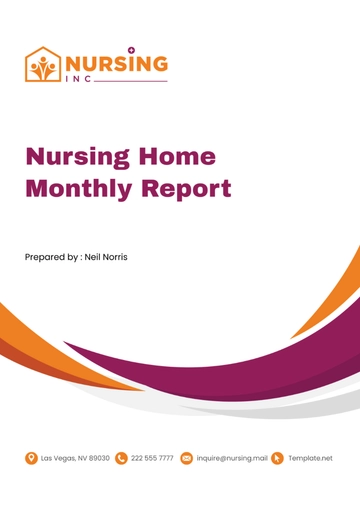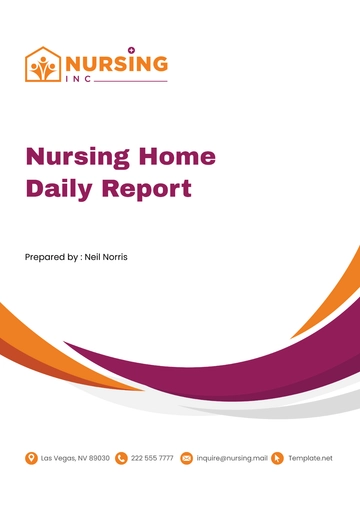Free Nursing Home Observation Report
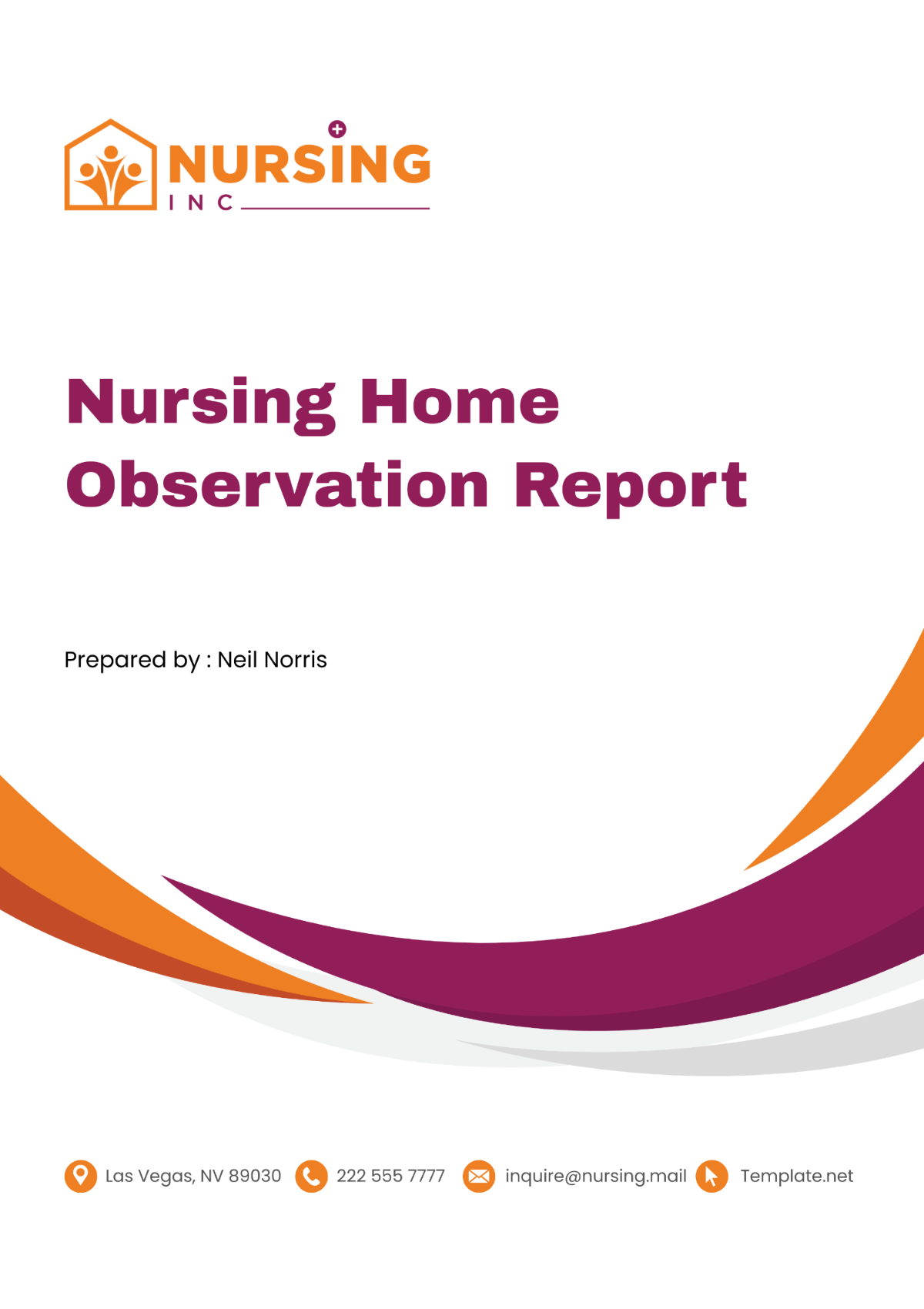
I. Resident Information
Demographic Information
Mrs. Elizabeth Johnson, a woman of 78 years who sadly lost her husband and is now widowed, has been making her home in Room 203 of our dedicated nursing home facility for the last two years. Over this period, we have come to know that she has a medical background that includes a history of hypertension, which is also known as high blood pressure, in addition to hypothyroidism, a condition in which her thyroid gland does not produce sufficient thyroid hormones, and coronary artery disease, a condition that affects the arteries of her heart. With regards to her immediate family, Mrs. Johnson is blessed to have two adult children who are deeply engaged and active in overseeing her health and well-being. They are frequently seen visiting their mother and contribute meaningfully to planning meetings that focus on the meticulous care that Mrs. Johnson rightly deserves.
II. Vital Signs
Temperature
The temperature of Mrs. Johnson was taken using a digital thermometer and the reading was recorded orally. The temperature recorded was 98.6°F. The term normothermia refers to a body temperature within the normal range, and in this case, this indeicates that Mrs. Johnson falls within this range. This means that Mrs. Johnson does not have a fever, and therefore, it can be ruled out as a potential concern in this situation.
Blood Pressure
The measurement of her blood pressure was taken using an automated cuff, a machine that accurately assesses blood pressure levels. To ensure the accuracy of the reading, an appropriate cuff size was used that was suitable for her size and body shape. The reading recorded by the machine was 130/80 mmHg. This result indicates that her blood pressure was stable and controlled well. Moreover, the reading was within acceptable limits, considering her current age and her medical history. So, based on this reading, her blood pressure can be considered to be in a healthy range.
Pulse Rate
A clinician conducted a physical examination in which they assessed the patient's radial pulse. This involved palpating the radial artery to sense the pulse beats, which were then counted over the duration of one whole minute. The findings revealed that the pulse had a regular rhythm, not displaying any irregularities or abnormalities. The count of beats per minute was observed to be 76, which falls within the healthy and normal range. These pulse characteristics suggest adequate function of the heart, specifically regarding its capability to generate an appropriate cardiac output. Furthermore, this also indicates that the body's tissues and organs are receiving a sufficient blood supply for optimal function, a process known as perfusion.
Respiratory Rate
The respiratory rate of the individual in question was recorded by observing the movement of their chest, specifically its rise and fall, over a time span of one minute. This method of observation resulted in a recorded measurement of 18 breaths per minute. When compared with standard or expected rates for a resting adult, this falls within the typical range. The measurement thus obtained suggests that they have a functioning respiratory system that does not deviate from the norm.
Oxygen Saturation
A medical device known as a pulse oximeter was used to measure the oxygen saturation level in Mrs. Johnson's blood. Her oxygen saturation level was recorded at 98%. This high reading indicates that Mrs. Johnson's body is receiving a sufficient amount of oxygen. It also suggests that the gas exchange in her lungs - a process where the body adds oxygen to the blood and removes carbon dioxide - is functioning adequately.
III. General Assessment
Appearance
Mrs. Johnson presents as a well-nourished individual with a body mass index within the normal range for her age. Her skin is intact, with no evidence of breakdown, and she maintains good personal hygiene, including regular bathing and grooming routines.
Mobility
Despite her medical conditions, Mrs. Johnson demonstrates remarkable mobility, utilizing a walker for support as needed. She moves about the facility independently, navigating hallways and common areas with confidence and minimal assistance.
Nutritional Status
Mrs. Johnson exhibits a healthy appetite and enjoys a varied diet consisting of balanced meals provided by the facility's dietary services. She expresses satisfaction with the meals offered and demonstrates a willingness to try new foods and flavors.
Hydration Status
Throughout the observation period, Mrs. Johnson consumes fluids regularly, including water, herbal tea, and fruit juices. She maintains adequate hydration levels, as evidenced by clear urine output and absence of signs of dehydration.
Elimination
Bowel movements are regular and occur without difficulty, occurring once daily and exhibiting normal consistency and color. Mrs. Johnson maintains continence with minimal assistance, using the restroom independently as needed.
Pain Assessment
Mrs. Johnson reports no significant pain or discomfort during the observation period. She denies any complaints of pain and appears comfortable and at ease, with no observable signs of distress or discomfort.
IV. Medication Administration
Medications Administered
Mrs. Johnson's medication regimen includes Metoprolol for hypertension, Levothyroxine for hypothyroidism, Aspirin for cardiovascular protection, and Lisinopril for blood pressure management. All medications were administered orally as prescribed by the physician.
Response to Medications
Mrs. Johnson demonstrates good adherence to her medication regimen and experiences no adverse reactions or side effects. Her blood pressure remains stable within the target range, and there are no indications of medication-related complications or issues.
V. Cognitive and Mental Status
Orientation
The individual referred to as Mrs. Johnson is totally orientated in all respects, including to other people, her surroundings, the current time and the current situation she finds herself in. She has the capacity to accurately identify herself and she is also able to correctly identify the staff members at the facility where she stays. Moreover, she is able to correctly identify the other residents within the nursing home. Additionally, Mrs. Johnson has shown that she is aware of the current date, the exact time of day, and she knows where exactly she is within the nursing home facility at any given time.
Memory Recall
Her memory appears intact, with the ability to recall recent events, past experiences, and personal details with clarity and accuracy. Mrs. Johnson engages in conversations, recalling conversations from previous interactions and sharing anecdotes from her life history.
Communication Abilities
Mrs. Johnson communicates effectively with staff and peers, expressing her needs, preferences, and emotions clearly and appropriately. She engages in conversation with interest, actively listening and responding thoughtfully to questions and prompts.
Behavioral Observations
Throughout the observation period, Mrs. Johnson maintains a positive and cooperative demeanor, displaying appropriate social behaviors and interactions with staff and fellow residents. She remains calm and composed, with no signs of agitation, anxiety, or depressive symptoms noted.
VI. Social Interaction
Engagement in Activities
Mrs. Johnson actively participates in a variety of recreational and therapeutic activities offered by the facility, including arts and crafts, group exercises, and musical performances. She demonstrates enthusiasm and enjoyment during these activities, engaging with peers and staff members in a positive and meaningful manner.
Interactions with Staff and Peers
Mrs. Johnson fosters warm and supportive relationships with both staff members and fellow residents. She readily engages in conversation, offering words of encouragement and sharing laughter with those around her. Her interactions contribute to a sense of camaraderie and community within the nursing home environment.
Attendance at Social Events
Mrs. Johnson attends scheduled social events and gatherings, such as birthday parties, holiday celebrations, and group outings. She actively participates in these events, contributing to the festive atmosphere and enjoying the companionship of her peers.
Involvement in Resident Council or Committees
Mrs. Johnson is an active member of the resident council, participating in meetings and voicing her opinions on matters related to facility policies, activities, and quality of care. She demonstrates leadership qualities and advocates for the interests and well-being of her fellow residents.
VII. Special Observations or Concerns
Incidents and Accidents
During the period of observation, there were no occurrences, mishaps, or fall incidents that were documented. Mrs. Johnson has proven to be safety conscious and dutifully adheres to the instructions provided by the staff in terms of moving around and dealing with potential environmental hazards, thereby reducing the potential risk of sustaining injuries.
Changes in Condition or Behavior
During the period of observation, it was observed that there weren't any significant changes to report in the condition or behavior of Mrs. Johnson. Her health status remains stable with no fluctuations or alterations noticed. Further, Mrs. Johnson also showed signs of being well-adjusted, demonstrating a composed and balanced demeanor throughout. No new symptoms have surfaced, nor any concerns raised either by the staff involved in her care or the family members. Thus, her overall status remains unchanged and presents no new cause for concern or agitation.
Family or Caregiver Concerns
Family members express satisfaction with Mrs. Johnson's care and the services provided by the facility. They appreciate the compassionate and attentive approach of the staff and feel confident in the quality of care received by their loved one.
Follow-up or Additional Assessments
No immediate follow-up or additional assessments are deemed necessary based on the observations documented in this report. Mrs. Johnson's care plan remains appropriate and effective in meeting her needs and promoting her overall well-being.
VIII. Care Plan Implementation
Care Provided According to Plan
The care provided to Mrs. Johnson during the observation period adhered to her individualized care plan, which addresses her medical, physical, social, and emotional needs. Staff members follow established protocols and guidelines to ensure consistency and continuity of care.
Monitoring and Evaluation
Nursing staff monitor Mrs. Johnson's progress and response to interventions regularly, documenting any changes or concerns in her condition. This ongoing monitoring allows for timely adjustments to her care plan as needed to optimize outcomes and maintain her health and comfort.
Collaboration with Interdisciplinary Team
The interdisciplinary team, including nurses, therapists, social workers, and dietary staff, collaborates effectively to address Mrs. Johnson's holistic needs. They communicate regularly, share information, and coordinate care to provide comprehensive and coordinated services.
Documentation and Reporting
Accurate and thorough documentation of Mrs. Johnson's care and progress is maintained in her electronic health record. Nursing notes, medication administration records, and other relevant documentation are completed promptly and in accordance with facility policies and regulatory requirements.
IX. Recommendations
Promotion of Social Engagement
Encourage Mrs. Johnson to continue participating in social activities and engaging with her peers to foster a sense of connection and belonging within the community. Offer opportunities for involvement in leadership roles or special interest groups to enhance her sense of purpose and fulfillment.
Enhancement of Cognitive Stimulation
Provide activities and programs designed to stimulate cognitive function and memory recall, such as brain games, puzzles, and reminiscence therapy. Incorporate sensory stimulation techniques and multisensory experiences to engage Mrs. Johnson's senses and promote cognitive health.
Encouragement of Physical Activity
Encourage Mrs. Johnson to engage in regular physical activity and exercise, tailored to her abilities and preferences. Offer opportunities for low-impact exercises, chair yoga, or walking groups to improve strength, flexibility, and overall well-being.
Regular Family Involvement
Encouragement should consistently be given for the involvement of Mrs. Johnson's family members in their mother’s care and activities. As she progresses through her journey, it would be beneficial to organize meetings or conferences that include every family member. These gatherings serve as a platform to discuss and evaluate her progress in detail, providing an opportunity for the family members to voice any concerns or ask any questions they might have about her care. Moreover, it encourages mutual collaboration among the family members in setting goals and objectives for Mrs. Johnson's care plan. This collective effort ensures that everyone's views are considered and included in the care planning process, which often results in a more comprehensive and effective plan.
X. Signature
As the observing Registered Nurse, I affirm the accuracy and completeness of the Nursing Home Observation Report for Mrs. Elizabeth Johnson. The detailed documentation reflects her holistic assessment, care provision, and recommendations for optimizing her well-being. This report serves as a valuable tool for continuity of care and interdisciplinary collaboration.
Signed By:

[Your Name]
[Date and Time of Completion]
- 100% Customizable, free editor
- Access 1 Million+ Templates, photo’s & graphics
- Download or share as a template
- Click and replace photos, graphics, text, backgrounds
- Resize, crop, AI write & more
- Access advanced editor
Discover the ultimate solution for streamlined nursing home documentation with the Nursing Home Observation Report Template from Template.net. This editable and customizable template, powered by an intuitive AI editor tool, offers comprehensive features for recording vital signs, resident assessments, medication administration, and social interactions. Simplify your reporting process and enhance resident care with this innovative template.
You may also like
- Sales Report
- Daily Report
- Project Report
- Business Report
- Weekly Report
- Incident Report
- Annual Report
- Report Layout
- Report Design
- Progress Report
- Marketing Report
- Company Report
- Monthly Report
- Audit Report
- Status Report
- School Report
- Reports Hr
- Management Report
- Project Status Report
- Handover Report
- Health And Safety Report
- Restaurant Report
- Construction Report
- Research Report
- Evaluation Report
- Investigation Report
- Employee Report
- Advertising Report
- Weekly Status Report
- Project Management Report
- Finance Report
- Service Report
- Technical Report
- Meeting Report
- Quarterly Report
- Inspection Report
- Medical Report
- Test Report
- Summary Report
- Inventory Report
- Valuation Report
- Operations Report
- Payroll Report
- Training Report
- Job Report
- Case Report
- Performance Report
- Board Report
- Internal Audit Report
- Student Report
- Monthly Management Report
- Small Business Report
- Accident Report
- Call Center Report
- Activity Report
- IT and Software Report
- Internship Report
- Visit Report
- Product Report
- Book Report
- Property Report
- Recruitment Report
- University Report
- Event Report
- SEO Report
- Conference Report
- Narrative Report
- Nursing Home Report
- Preschool Report
- Call Report
- Customer Report
- Employee Incident Report
- Accomplishment Report
- Social Media Report
- Work From Home Report
- Security Report
- Damage Report
- Quality Report
- Internal Report
- Nurse Report
- Real Estate Report
- Hotel Report
- Equipment Report
- Credit Report
- Field Report
- Non Profit Report
- Maintenance Report
- News Report
- Survey Report
- Executive Report
- Law Firm Report
- Advertising Agency Report
- Interior Design Report
- Travel Agency Report
- Stock Report
- Salon Report
- Bug Report
- Workplace Report
- Action Report
- Investor Report
- Cleaning Services Report
- Consulting Report
- Freelancer Report
- Site Visit Report
- Trip Report
- Classroom Observation Report
- Vehicle Report
- Final Report
- Software Report
